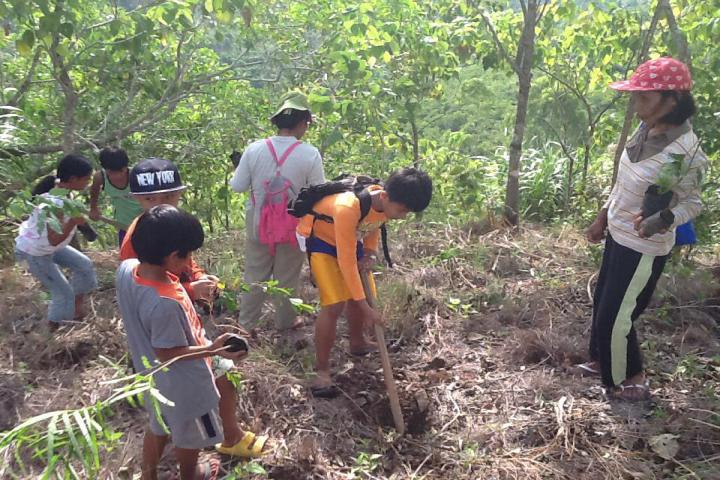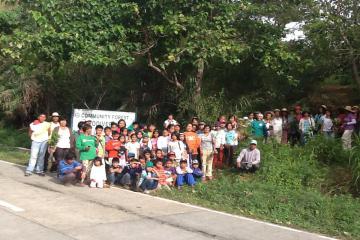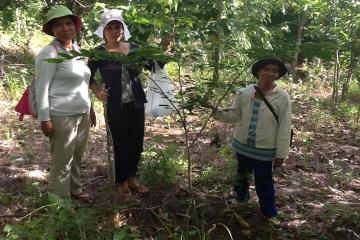
Supported by Toyota Environmental Activities Grant Program, the two year project is implemented in collaboration with the local residents was started last year and aims to improve the biodiversity of the community forest of Kirang through planting of at least 10 different local and endemic species of trees.
“Kirang which means dry land in local dialect, connotes that anything planted is doomed to fail,” said by Project Manager Mario Lopez. However, he added that the 21 years of continuous effort to plant fast growing trees like eucalyptus and gmelina helped in the gradual recovery of the denuded forest.
Dr. Seido mentioned that the initially planted trees serve as nurse trees to the newly planted local species of seedlings. He emphasized that the existing vegetation improved the soil permeability and soil nutrients which led to the good growing condition of the local species of trees.
The seedlings planted last year like Vitex parviflora (molave), Hopea acuminate (manga chapeuy), Pterocarpus indices (narra)Terminalia microcapa (kalumpit), Parkita roxburghi (Kupang) and Crdia dichotama (anonang) are now growing an average of 1.5 m. Most of these seedlings are critically endangered and almost on the verge of extinction and planting these species help in their conservation.




